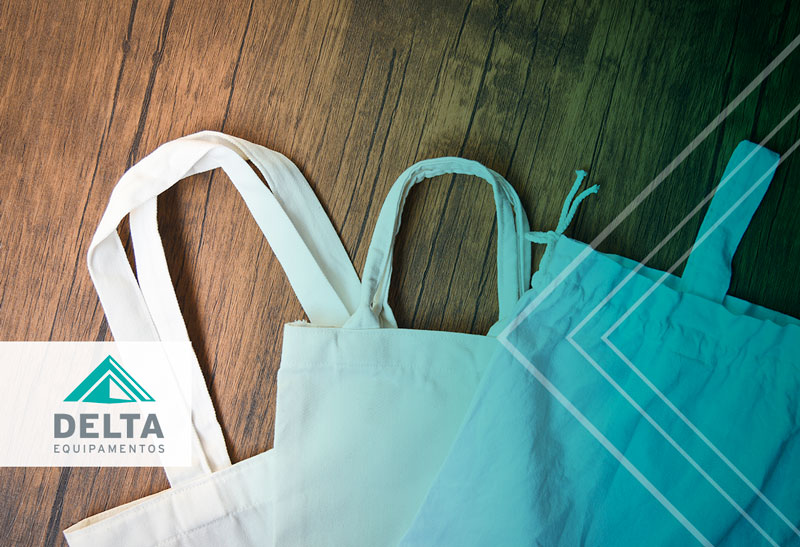Although it is not new, upcycling is a concept that has gained strength in recent years in the textile industry. One of the main reasons is environmental awareness and the renewal of the fashion universe. It can help reduce waste and improve production control and capacity.
Want to understand the topic better? Check out the article now in which we will show you what upcycling is, how it came about, which companies are adopting it in Brazil and around the world and why your company should implement it!
What is upcycling and how did it come about?
The term upcycling was first used around 1994 by German environmentalist Reine Pilz. After 8 years, Cradle to Cradle author William McDonough reused the term, which popularized it.
Although it can be applied in other areas such as art, decoration, architecture, among others, in the fashion industry it has a great impact that can change the way you produce your pieces.

The concept of upcycling consists of using pieces that would otherwise be discarded or leftover fabrics to customize new pieces. It integrates sustainability, creativity and cost reduction, since defective parts can be reused to add value to a new product instead of being discarded.
Although many people associate it with recycling, the concepts are different, since in recycling materials go through a process in which they are often converted into lower quality materials.
+Learn more: Circular Economy: how does it apply to the textile sector?
How are the first implementation attempts being made around the world?
In Japan, the transformation of used pieces and the reuse of fabric have been techniques used for over a century. There, the concept is known as “boron”. Estonian designer Reet Raus set up a production line in a factory in Bangladesh that uses waste to produce upcycled clothing.

English designer Christopher Raeburn also adopts upcycling, producing clothes and accessories with recovered military fabrics In this way, characteristics such as camouflage and thermal protection are taken advantage of. Reformation is an American company founded by designer Yara Aflalo, and is also a reference in upcycling.
Even big brands are already including the technique, such as Comme des Garçon and Stella McCartney, who have already applied the concepts in their collections. Thrif-tee is also an example, as it customizes items sourced from around the world.
+Learn more: Sustainability in manufacturing: an issue to be analyzed
Which Brazilian companies are implementing this concept?
ACOMAS transforms men’s shirts that would otherwise be discarded due to defects into skirts, dresses, different and stylized shirts, among other creative pieces. Insecta Shoes is also a standout in sustainability in Brazil and reuses discarded fabrics from industries and other brands to make footwear and accessories. The brand is also vegan, as it does not contain any materials of animal origin in its production.

One of the challenges in implementing upcycling in large volume production lines is the need to have an employee to customize each piece, however, little by little some brands are already managing to break down these barriers.
Hering, through FHH, developed the Tramas Afetivas project, which is an innovation laboratory in the circular economy. FARM formed a partnership with Re-Roupa and launched are-FARM and Renner launched a line of pieces made with recycled mesh, aRe Malha, showing that it is possible to take the concept to large-scale production.
Why should your company think about implementing upcycling?
In Brazil, according to Sinditêxti-SP (Union of Spinning and Weaving Industries of the State of São Paulo), around 175 thousand tons of textile waste are produced from the cuts and wrappings of national clothing manufacturers. Of these, it is estimated that more than 90% are sent to landfills and other types of incorrect disposal — even though this is an environmental crime, according to Law No. 12,305/2010.
Improper disposal has serious consequences for the environment, as some fabrics take many years to decompose and can poison the soil and water. In addition to the sustainable fashion trend, one reason why upcycling is being increasingly used is the increase in individual awareness, as consumers are already questioning the fate of the clothes they use and the way they are produced.
In other words, the public also sees a lot of value in brands that value sustainability, making the practice of upcycling a competitive differentiator. As a result, the trend is for it to be used more and more, generating a positive impact on the environment and reducing the waste of inputs within clothing factories.
Did you enjoy learning about upcycling? Share this article on your social networks so more people can find out about it too!


![E-book]How to ensure quality control in the textile industry?](https://deltamaquinastexteis.com.br/wp-content/uploads/2019/04/ebook-como-garantir-o-controle-de-qualidade-na-industria-textil-1.jpg)
